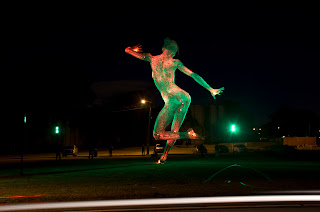Camera club "how-to' instructions bugging you? Have you just tried uploading an image for competition and wasted an hour because the instructions were not understandable? Do you sometimes think you could do a better job at writing instructions yourself? I think you can. Here are some suggestions and an example for writing a clear, concise, and usable set of instructions. I am using a draft procedure from the Berkeley Camera Club as an example. Now you should try the same with your group but you'll have to design your own logo!
"How-to" procedures for a club should conform to a standardized format. At a minimum, each procedure should have a title, procedure number, and date the procedure was written. If your group is growing, changing, or open to suggestions from your membership, also consider adding a revision number, group identification, and a group logo.
The logo, group identification, date, procedure number, and revision number should be placed in a header, as in figure 1 below.
Figure 1: Header Information
Below the header, place the title and text of the procedure. The procedure can usually be divided into two parts, a
background and a
procedure. The background provides an overview, purpose, and context while the procedure is the set of instructions to be followed.
Figure 2: Example Procedure, Page 1
Since you belong to a camera club, you are probably familiar with Photoshop, Lightroom, or some other software for processing images. These can be useful in constructing written instructions, especially if you use screen shots that can then be imported into Photoshop/Lightroom for further processing. The screen shot in figure 2, above, required no further processing to highlight the My Galleries selection. Not all screen shots will provide such nice highlighting to direct the attention of the reader.
I like to use arrows, colored yellow or orange or red, to direct the reader's attention. Draw an arrow in Photoshop and save it as a layered image (e.g., psd). This will allow you to open the file later and use the arrow without having to remove the background. Note that since the image below has been compressed (e.g., jpg), it has a white background, but the layered version has a clear background.
Figure 3: Arrow to Direct Attention
Now that you have an arrow you can use it in any of the screen clips where you want to direct the reader's attention, like in page 2 of the example procedure in figure 4 below.
Figure 4: Adding Arrows to Direct Attention
That's about it, except you should always follow up with feedback and comments from others to find out if your procedure works the way you think it should. And of course, after several months go by there will probably be some complaints and a rewrite. That's where the revision number comes in handy. And maybe you might help someone else do the revision!




















































